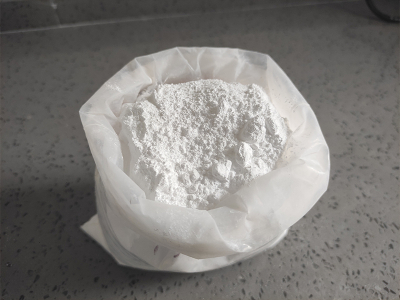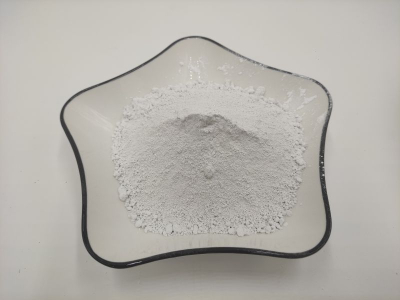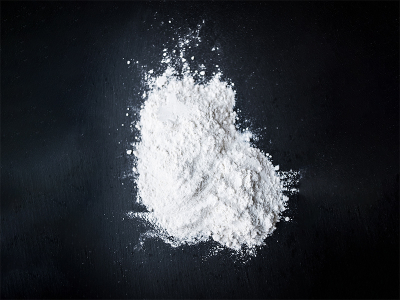Rough classification and synthesis method of high-gloss barium sulfate
Rough classification and synthesis method of high-gloss barium sulfate
High-gloss barium sulfate can be divided into four types: precipitated barium sulfate, modified precipitated barium sulfate, nano-barium precipitated barium sulfate, and natural barium sulfate. Glauber's salt method is standard precipitated barium, and sulfuric acid method is modified barium. The awn method is to use high-gloss barium sulfate and coal to calcine barium sulfide, and then react with polynitrate (sodium sulfate) to precipitate barium sulfate and by-product sodium sulfide.
The sulfuric acid method converts barium sulfide into barium carbonate through carbon dioxide, and then reacts with pure sulfuric acid to form precipitated barium sulfate. From the production process and process design of the above-mentioned barium sulfate, it can be seen that the free barium, odor (residual sulfur ions), impurities, black spots, and whiteness of barium sulfate precipitated by the sulfuric acid method are several development steps higher than those of the mirabilite method. , with strong affinity and radiation resistance. Of course, the cost of barium sulfate manufacturers is much higher, so it is the most expensive modified precipitated barium sulfate on the market.
The barium sulfate manufacturer controls the D50 (median particle size distribution) of the modified precipitated barium sulfate at 0.2 by deep processing μm-0.4μm. Due to the high processing requirements, the output of barium sulfate manufacturers in my country is still small, and the price is also high. Natural barium sulfate, also known as barite powder, physical barium and heavy barium, is the choice of natural barium sulfate ore (barite) after cleaning, grinding and drying. There are many impurities, and the quality is mainly determined by the ore itself.
Synthesis of high-gloss barium sulfate:
Glauber's salt black ash method barium sulfide raw material (see barium sulfide for preparation) removes calcium and magnesium, mixes it with mirabilite salt solution, and reacts at 90 ℃ to form barium sulfate precipitation. After the precipitation is filtered, washed and pickled, the pH value is adjusted to 5-6 with sulfuric acid, and then filtered, dried and pulverized to obtain the finished product of precipitated barium sulfate. In the production process of precipitated barium sulfate, adding surface treatment agent or dispersant to Jiangmen barium sulfate sand can prepare modified ultrafine precipitated barium sulfate.
The reaction equation is as follows:
Comprehensive utilization of brine: The yellow barium brine reacts with polynitrate, and the barium sulfate product is obtained by acid cooking, washing, separation, dehydration and drying. The reaction equation is as follows: Glauber's salt black ash method. Anren County Reaction Equation: Operation method: After clarifying the black ash leachate produced by the reaction of barite and pulverized coal, Jiangmen barium sulfate sand is made into barium sulfide raw material with a concentration of 14% to 17%, and heated to 80 ℃. After removing calcium and magnesium, prepare a mirabilite solution with a concentration of 22% to 25% and heat it to 90°C. The prepared barium sulfide solution can be added into Glauber's salt under stirring for analysis reaction, and the ambient temperature is kept at 90°C to generate nano-barium sulfate precipitate. The endpoint of the reaction should be determined by the equivalent weight of the two solutions. After the precipitate is filtered, washed and pickled, the pH value of Jiangmen barium sulfate sand is adjusted to 5-6 with sulfuric acid, and then filtered, dried and pulverized, which is called hardness. Comprehensive utilization of brine. The open-pit mining method is used for the residual slope deposits, and the underground mining method is mostly used for the primary mines. See "Phosphate rock" for general process flow. The main research methods of mineral processing are manual sorting, gravity separation, magnetic separation and flotation.
Dissolve 110g BaCl2·2H2O in 500ml water, and dissolve 45ml concentrated sulfuric acid in 240ml water (relative density 1.84). While heating and stirring, the sulfuric acid solution was slowly added to the barium chloride solution. After standing for a period of time, check whether the ba2+ ions in the solution are completely precipitated, otherwise add a small amount of sulfuric acid. After clarification, pour out the clarified liquid carefully, decanting the precipitate, and rinse with hot water for 5 to 6 times. The precipitate was filtered in a funnel and rinsed repeatedly with hot water until no chloride ions were detected in the AgNO3 solution. After pumping and drying, it should be dried at 50~70℃, and the dried product should be ground and sieved.
Zhanhua County Metathesis Method Add 15°Bé barium chloride solution to the refined 5% sodium sulfate solution under continuous stirring. Pqrxd85azeurz keeps the pH of the solution below 5. Barium sulfate sand is used for the precipitation reaction. After the reaction is completed, the barium sulfate sand is filtered and thoroughly rinsed to be free of chlorides, and the product is dried at low temperature.



